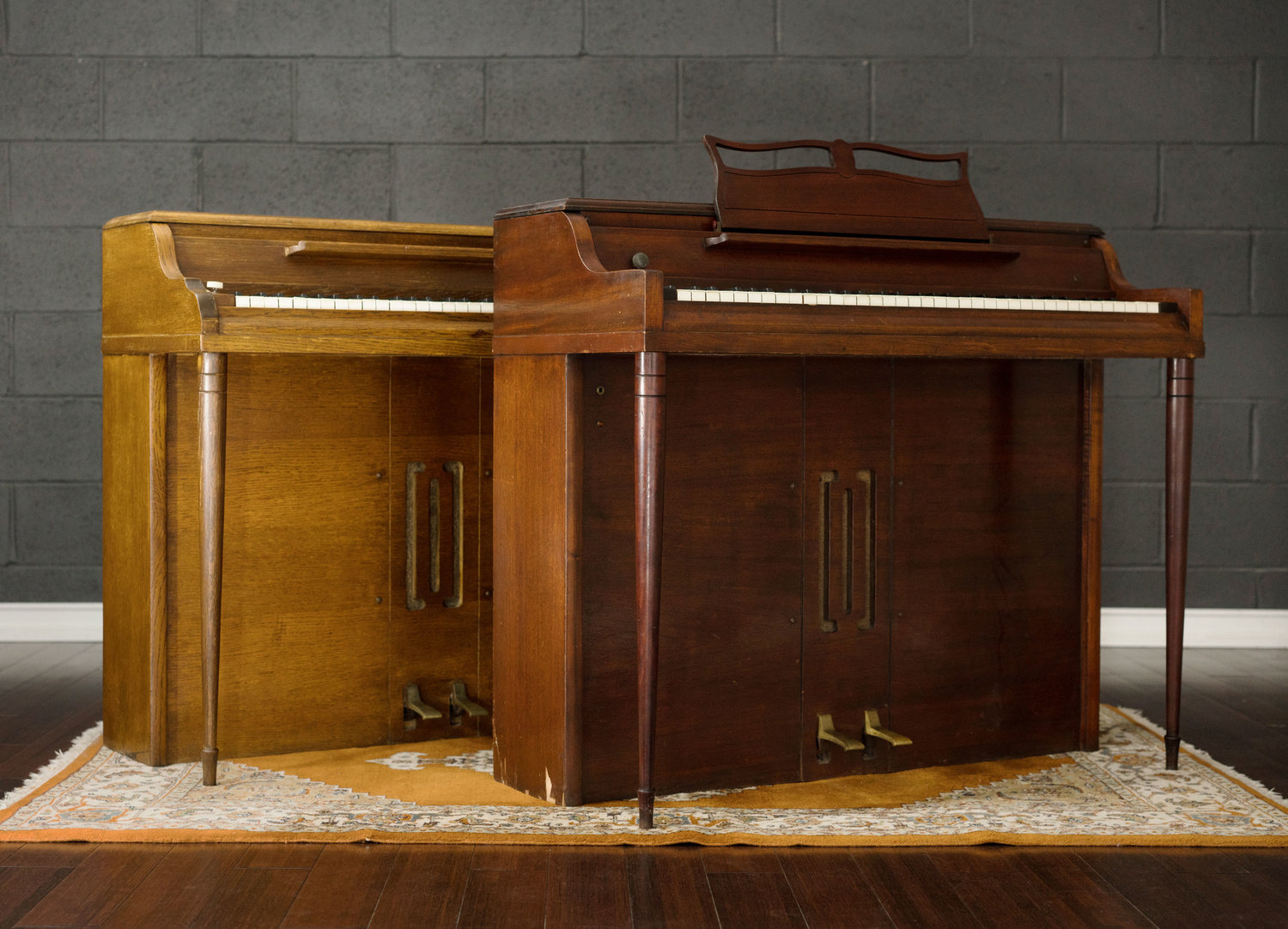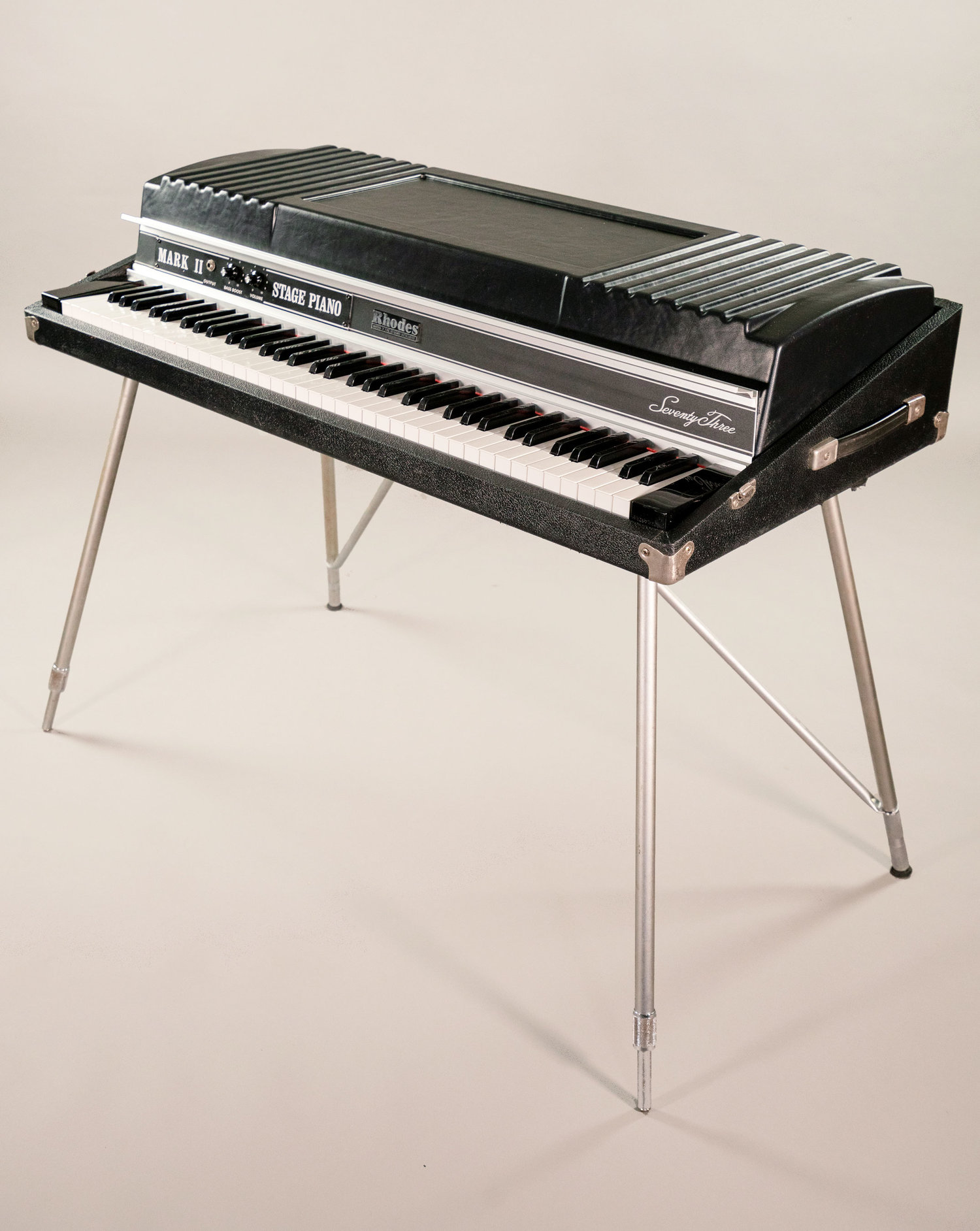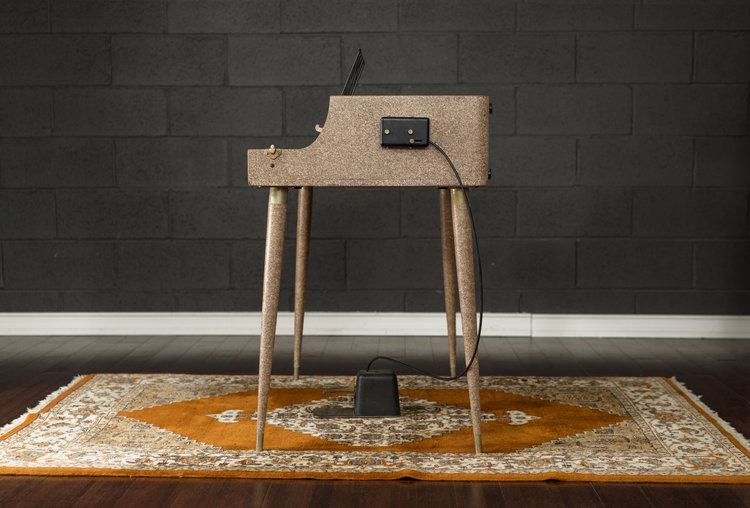The Wurlitzer 206 Student Model, Explained
The Wurlitzer 206 is the Wurlitzer that went to school. Equal parts practical and utopian, it was invented to solve an age-old problem: how do you give group lessons on an instrument that weighs half a ton and is taller than the student?
You amplify it, of course. Strip it down to the bare essentials and give it a (teacher-controlled) volume knob. Pianos for everyone.
Wurlitzer put its electronic pianos in the service of music teachers from the beginning. Newspapers from the 1950s show small groups of kids learning on a network of Wurlitzer 112s. At one point, Wurlitzer even made tiny, extra-minimalist keyboards that bolted together like musical lunch tables. But these early student pianos are rare: production numbers are dwarfed by their consumer model counterparts.
Then, in the 1960s, Wurlitzer revamped their electronic pianos, giving them plastic tops, a smaller footprint, and an updated transistor amplifier. More reliable and easier to maintain, these new 200-series keyboards were much more suitable for schools. The 206 was the 200, but optimized for the classroom. Later, when the 200a replaced the 200, Wurlitzer upgraded the 206 accordingly, installing 200a amplifiers. These are known as the 206a.
In schools, a classroom might have a half-dozen 206s and a teacher module. The teacher's piano, the Model 207, was connected to a light-up board that displayed notes as the teacher played them. It also had a series of switches in the front that could enable or disable the volume of individual student pianos. Students could play quietly through headphones, or through the two 8" speakers in the attached cabinet. No aux output: apparently Wurlitzer figured that the speakers provided all the volume that students would need.
Another difference: the 206 only came in prosaic beige. And it didn't have vibrato, probably to keep costs (and instructors' blood pressure) down. Of course, all Wurlitzers have a natural shimmer, whether the vibrato is turned up or not. One can imagine a roomful of kids hammering out classical staples on a set of Wurlitzer keyboards. It was probably like getting locked inside an old-time music box, but instead of a little ballerina dancing around you'd find a frazzled band teacher.
So, yes, an unmodified, original 206 is a little limited in features compared to the 200 or other console versions such as the 203. However, because Wurlitzer used not just the 200 body but also its circuit board when manufacturing the 206, it is possible to convert a 206 into a fully-functional studio piano that is equivalent to the 200 in every way. There's room on the board to install vibrato and an aux output. And if the beige gives you bad flashbacks to your earth-toned elementary school classrooms, you can have it refinished. Most 206s have good bones: never gigged, never used as an ashtray, spent summers in indoor storage.
The Wurlitzer 206 is definitely an underrated piano. Equivalent to a 200, but with arguably better sound quality due to the space in the cabinet for larger speakers, it still has that classic Wurlitzer tone. Plus, they're well-suited for a custom color: if anything, a new paint job only liberates it from its school uniform. Maintenance of a 206's action parts is also the same as a 200.
As a console model, the 206 is perfect for the studio, but it can also be taken on the road occasionally due to built-in handholds in the back. So, if your Wurlitzer is primarily for recording or songwriting, a 206 is a great option: equal to a 200 in mechanics and tone, but with better onboard speakers and a more customizable body.
If you want to add vibrato and an aux output to your 206 or 206a, we have kits that can allow you to do so. You will need to be familiar with using a soldering iron and able to carefully solder the additional components in place. The 206 Vibrato & Aux kit can be found here. The 206a Vibrato and Aux Kit can be found here. Your may also be interested in a 200 or 200a component rebuild kit found here.
Further Reading
Browse all of our articles on restoring vintage gear. Or, click on an image below.







